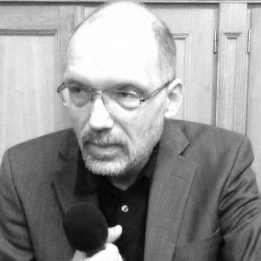Defence minister Mariusz Błaszczak has declared that Poland will have “the most powerful land forces in Europe” thanks to ongoing investments by the government, which recently raised the defence budget to 3% of GDP – one of the highest levels in NATO – and aims to further increase it to 5%.
Since Russia’s invasion of Ukraine, Warsaw has embarked on a military spending spree. This week, it confirmed a deal with South Korea that will see Poland acquire almost 1,000 tanks and over 600 howitzers. It has also recently agreed the purchase of 250 new and 116 used Abrams tanks from the US.
For comparison, Germany has 266 battle tanks in service and France 406, according to Global Firepower, which collates data on the strength of military forces.
How many tanks are in service in each European country – 2022
Source: Global Firepower#maps #europe #tanks #data #infographic pic.twitter.com/obHLM48rs1
— THEWORLDMAPS 🇺🇦 (@theworldmaps_) March 20, 2022
Under a new Homeland Defence Act passed in March with cross-party support, Poland also committed to more than doubling the size of its armed forces to 300,000 personnel. In May it launched a new paid form of voluntary military service in an effort to bring in recruits.
According to The Military Balance, an annual assessment carried out by the International Institute for Strategic Studies, last year Turkey had 355,200 active military personnel, followed by France with 203,250 and Germany with 183,500.
Active military personnel in Europe (incl. Turkey) – top 10
(Source: Military Balance 2021) pic.twitter.com/NbOWaDTaSc— Ulrike Franke (@RikeFranke) February 28, 2021
The Homeland Defence Act also boosted the defence budget to 3% of GDP, which based on 2021 data would put Poland behind only Greece (3.82%) and the United States (3.52%) in NATO in relative terms. Ruling party chairman Jarosław Kaczyński this month declared that defence spending will eventually reach 5% of GDP.
Speaking yesterday, Błaszczak declared that “thanks to [these] investments in the Polish army, we will become the most powerful land force in Europe”, reports Polsat News. He noted that the spending would not only increase the size of the armed forces, but also modernise it by replacing old post-Soviet equipment.
Earlier this year, Poland donated over 240 of its Soviet-designed T-72 tanks to Ukraine. This week, Ukraine confirmed that Poland has also supplied an unspecified number of PT-91 Twardy tanks, which are an upgraded version of the T-72. Poland has been the second biggest donor of military equipment to Ukraine this year, behind only the US.
Poland has been the second-largest donor of in-kind military aid to Ukraine this year and one of few countries to have delivered 100% of promised weapons.
From @kielinstitute's Ukraine Support Tracker: https://t.co/u3tH488XRu pic.twitter.com/KyMcwxnzfI
— Notes from Poland 🇵🇱 (@notesfrompoland) July 9, 2022
President Andrzej Duda made clear in June that Warsaw was hoping that its allies would help fill these gaps with donations or sales of their own equipment. He accused Germany of reneging on a promise to do so by providing Leopard tanks. Berlin claims Poland made unrealistic demands for the newest version of the tank.
The prime minister, Mateusz Morawiecki, also announced last month that the European Commission had agreed to “reimburse a large part of our expenses” relating to the equipment donated to Ukraine.
When Błaszczak visited Washington in April to discuss arms deals, defence secretary Lloyd Austin pledged that the US would help “the Polish military become one of the most capable in Europe”.
As well as securing two deals for Abrams tanks, Poland has also signed or is seeking deals with the US for Patriot air defence systems, HIMARS rocket launchers, F-35 combat aircraft, attack helicopters and drones.
The agreements with South Korea announced this week will see Poland purchase an initial 180 tanks and 48 howitzers, with delivery beginning this year. A second stage will see the supply of over 800 tanks and 600 howitzers, with both being produced in Poland by 2026.
However, a former chief of the general staff of the Polish army, Mieczysław Gocuł, has expressed scepticism about the deal, telling broadcaster TVN that the priority should be securing ammunition for existing equipment.
Gocuł suggested that the government, which faces parliamentary elections next year, wants new weapons to display at military parades and to shore up support.
South Korea's biggest ever arms deal will make it a major supplier of weapons flooding into Europe since the Ukraine war began, with sales to NATO-member Poland involving more than 1,600 tanks and howitzers, and nearly 50 fighter jets. https://t.co/7uLmc1STCs
— Josh Smith (@joshjonsmith) July 28, 2022
Main image credit: Ministerstwo Obrony Narodowej (under CC BY 3.0 PL)

Daniel Tilles is editor-in-chief of Notes from Poland. He has written on Polish affairs for a wide range of publications, including Foreign Policy, POLITICO Europe, EUobserver and Dziennik Gazeta Prawna.




















